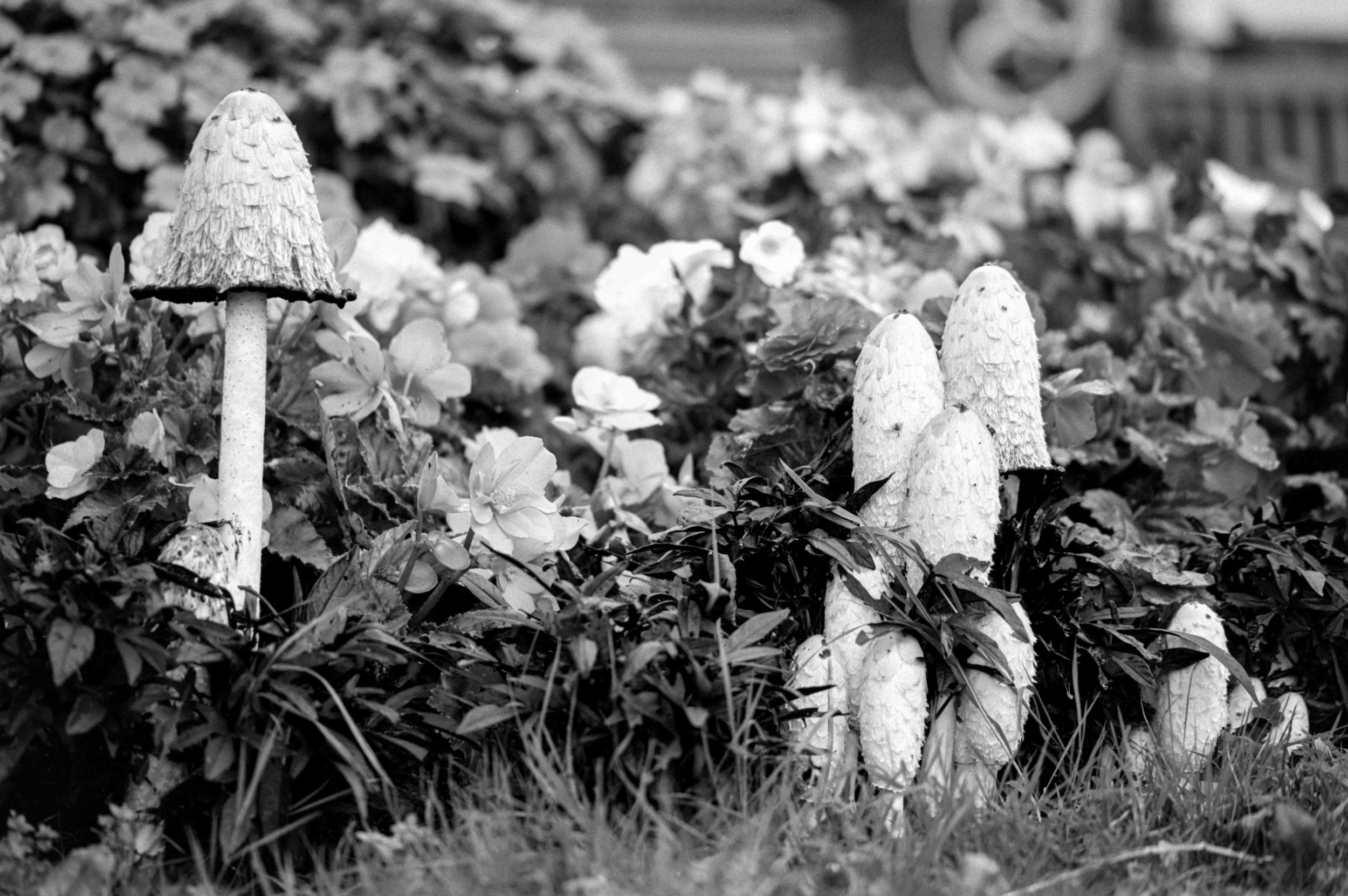Film Review - Ilford Pan F Plus (35mm)
These gulls conveniently stood rooted in place whilst I clambered over rocks to get into position. Shooting wide open on brighter parts of the day does allow you to shoot at handholdable shutter speeds. 1/250s 200mm F4.0.
People often say that shooting in black and white (B&W) is all about form and detail, so what better way to express that than shooting a fine grain film such as Ilford Pan F Plus, rated at just ISO 50. This is the lowest ISO you can get in Ilford’s current line-up and, unless you intend to shoot this on a sunny day wide open, it’s definitely a film stock that will require your camera to spend healthy amounts of time on a tripod. It lends itself to slower, more considered work such as landscapes and still life where you can really maximise the fine grain and sharp details without having to worry about fast shutter speeds.
A moment of action I managed to capture at short notice but the foreground was a tad underexposed. 1/100s 200mm F9.0 1 stop underexposed.
This shot of Saundersfoot harbour illustrates the high level of detail this film captures even on 35mm. 1/60s 50mm F4.0 with polariser.
A scene that caught by eye as I walked between Saundersfoot and Wiseman’s bridge. The gull with its reflection breaking the hard lines separating the light and dark of the rocks between water. 1/100s 200mm F5.6.
I took this film as the sole roll to go into my Nikon F100 for a trip away to South Wales, though I was shooting with other cameras I only had thirty-six images to shoot in B&W, so I really had to think and make it count. As I had shot a few other rolls of B&W film before this one (which I will write about in upcoming blogs) I was starting to get a better feel for what shots would and would not work. Thankfully the coast has plenty of inspiration with all sorts of things washing up on the shore as well as the deep contrast between rock and water.
A heart shaped carving in a tree branch proved to be a suitable area for fungal growth. 1/3s 50mm F8.0.
The test of a sea potato is demonstrative of the interesting subjects that wash up on our shores. 1/25s 105mm F16.
A fisherman tries his luck during high tide at Monkstone Point. 1/50s 200mm F8.0 with polariser.
One of the few ultra wide angle shots I took with this roll, it came out better than I had expected. 1s 20mm F16 with one stop of exposure compensation.
I didn’t find this film to be difficult to use apart from its very poor resistance to reciprocity failure. Being such a low ISO lends itself to being suitable for long exposure photography, however anything beyond a 1/2s exposure requires compensation which made it difficult to use at night. Thankfully I still had an old cable trigger I bought for my D850 some years ago and then never used, so with fresh batteries that came to my rescue for exposures beyond the cameras longest of 30s. It would be useful in these situations if my Nikon F100 had a T mode as well as bulb!
One of my tests of reciprocity failure at night, the metered reading through the camera about about 15s. 50s 50mm F8.0.
Shooting the same subject during the day gave a much less contrasty image. 1/15s 50mm F8.0.
Another test of reciprocity failure at night, I managed a long enough shutter speed to get the correct exposure. 25s 50mm F8.0.
However I can see deeper blacks in this image taken during the day, so perhaps the previous image was slightly over exposed. 1/15s 50mm F8.0.
This image was taken with a shutter speed corrected for reciprocity failure, notice the greater amount of shadow detail at the rear. 50s 50mm F8.0.
Here is the same shot with the metered exposure in camera, there is a lot more contrast and the subject quickly disappears into shadow. However I would say the main part in the light is actually better exposed. This is the difficult part of reciprocity failure, it is not uniform across the frame. 15s F8.0 50mm.
Overall, I was very happy with how these images came out and I am now curious as to how the options on the market with even lower ISO and finer grain will look. The moderate amount of contrast also works to your advantage as you can really make it pop in high contrast situations without losing too much shadow or highlight detail. Coupled with the fine grain you get a very smooth transition into bokeh for when you do open up your lens, this gives a pleasing rendering suitable for still life or perhaps even portraits. Definitely another one to add to my list of films to try in medium format. This cost is also more towards the cheaper end to the market, so you don’t have to worry about breaking the bank in order to get these highly detailed negatives. Though perhaps for those just starting out with film a more standard option with a higher ISO such as Ilford HP5 or Kodak Tri-X would be a better pick. Save this one for when you have a bit more time on your hands and you won’t regret it.
Perhaps the most perfect ink cap mushrooms I’ve ever seen. It was tricky to photograph these as they were moving about in the wind and I couldn’t use a very fast shutter speed. 1/60s 105mm F3.0.
This close-up shot shows off the high levels of detail as well as the smooth bokeh produced by a film with fine grain. My favourite photo from this roll. 1/60s 105mm F3.3.
Damaged Wedgwood tiles adorning a grave. 4s 50mm F8.0.
If you enjoyed this blog then please consider leaving a tip below.
















